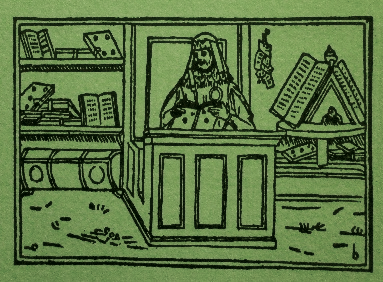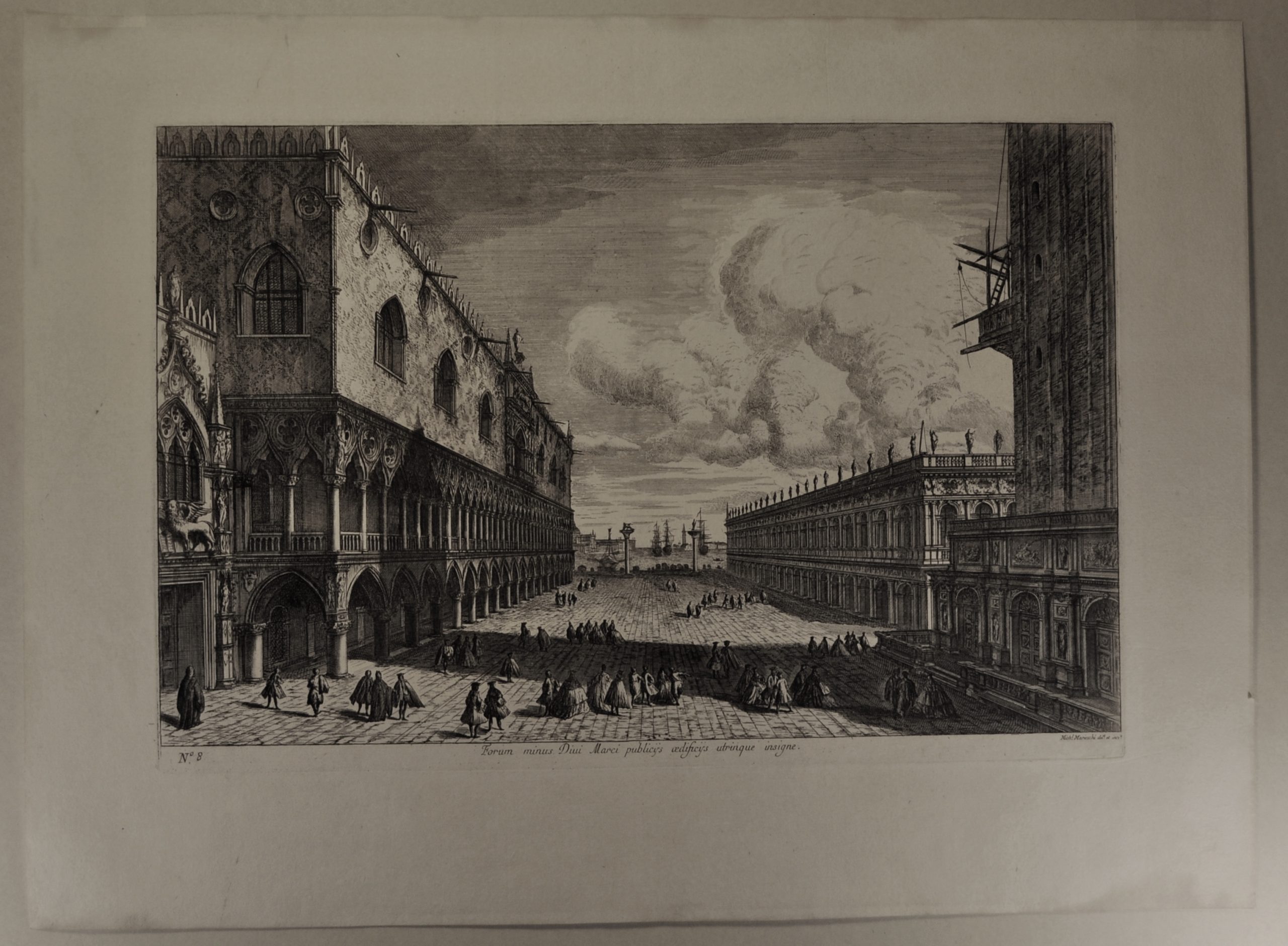Acquaforte di mm 310 x 470, su fglio di 430 x 595 mm.Vergata grossa. Filigrana con scudo e monogramma GF e 3 lune. Vergata grossa. II/IV stato. Titolo centrato sul margine inferiore, Mich. Marieschi del.t et inci.t sull’angolo destro, N°8 sull’angolo sinistro.Provenienza: “Magnificentiores selectioresque urbis Venetiarum prospectus, quos olim Michael Marieschi venetus pictor, et architectus in plerisque tabulis depinxit … Vendutur in vico Sancti Lucae apud eundem Auctorem Venetijs 1741 (ma 1742). Riporta Dario Succi nel volume “La Serenissima nello specchio di rame” : “La rigidità della prospettiva a linee convergenti verso il fondo e il deciso gioco chiaroscurale di questa incisione, databile attorno al 1738, si attenuano nella delicata evocazione del bacino di San Marco, affollato di imbarcazioni. Non sono noti dipinti corrispondenti”. Michele Marieschi (1710-1743) figlio di un mediocre pittore, studiò con passione architettura e si staccò presto dal padre. Tornato in patria dalla Germania nel 1735, dipinse belle vedute di Venezia. Nel 1741 (o 1742) diede alle stampe la raccolta di 21 acquaforti tratte dalle sue tele. Le incisioni di Marieschi rendono meglio delle sue pitture quel mondo scenografico e teatrale che la Venezia quotidiana offriva all’occhio dell’osservatore. Succi 1987, 5 I/IV, Montecuccoli degli Erri, Pedrocco 1999, 5 I/IV, Mary Pittaluga 1952, pag.35 e seg. Etching 310 x 470 mm, on a 430 x 595 mm sheet. Filigree with shield and GF monogram and 3 moons. Coarse rod. II / IV state. Title centered on the lower margin, Mich. Marieschi del.t et inci.t on the right corner, N ° 8 on the left corner. Provenance: “Magnificentiores selectioresque urbis Venetiarum prospectus, quos olim Michael Marieschi venetus pictor, et architectus in plerisque tabulis depinxit … Vendutur in vico Sancti Lucae apud eundem Auctorem Venetijs 1741 (but 1742). Dario Succi reports in the volume “The Serenissima in the copper mirror”: “The rigidity of the perspective with lines converging towards the background and the decisive chiaroscuro play of this engraving, datable to around 1738, are attenuated in the delicate evocation of the basin of San Marco, crowded with boats.No corresponding paintings are known”. Michele Marieschi (1710-1743), son of a mediocre painter, studied architecture with passion and soon broke away from his father. home from Germany in 1735, he painted beautiful views of Venice. In 1741 (or 1742) he published the collection of 21 etchings taken from his canvases. Marieschi’s engravings make the scenographic and theatrical world that daily Venice offered to the observer’s eye better than his paintings. Succi 1987, 5 I / IV, Montecuccoli degli Erri, Pedrocco 1999, 5 I / IV, Mary Pittaluga 1952, page 35 et seq.
Libreria Emiliana
Antiquaria
Libri e Stampe Veneziane
dal XV al XXI Secolo
dal XV al XXI Secolo


